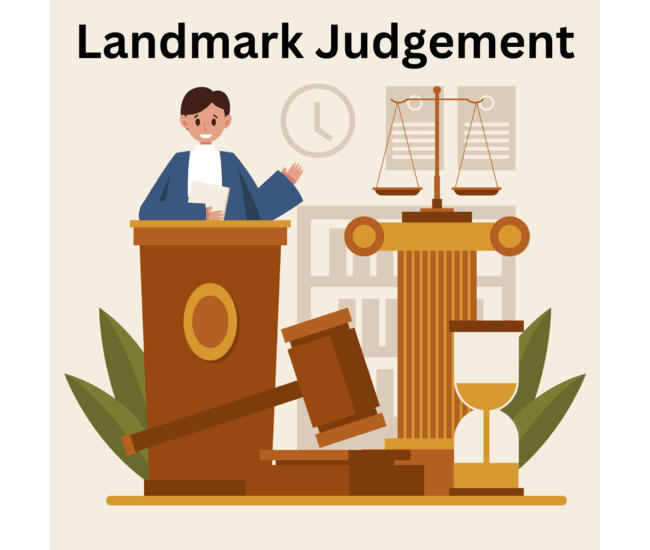The Keshavananda Bharati v. State of Kerala case (1973) is one of the most significant rulings in the history of Indian constitutional law. Keshavananda Bharati Case (1973) dealt with the extent of Parliament’s power to amend the Constitution, particularly its ability to alter fundamental rights. The judgment delivered in this case is often referred to as the foundation of the “Basic Structure Doctrine.”
Background:
Swami Keshavananda Bharati was the head of a religious mutt in Kerala and filed a petition challenging the Kerala government’s attempts to acquire his property under the Kerala Land Reforms Act, 1963. He invoked Article 26, which guarantees the right to manage religiously owned property without government interference. Although his property rights were at stake, the case quickly evolved into a broader constitutional issue, focusing on Parliament’s power to amend the Constitution under Article 368.
Key Issue:
The principal legal question was whether Parliament had unlimited power to amend any part of the Constitution, including Fundamental Rights, or whether there were certain inherent limits to this power. This issue arose in the backdrop of two prior landmark cases:
1. Shankari Prasad (1951): The Supreme Court ruled that Parliament could amend any part of the Constitution, including Fundamental Rights.
2. Golak Nath (1967): The Supreme Court reversed its earlier view, holding that Parliament could not amend Fundamental Rights.
Judgment:
The case was heard by a 13-judge bench, the largest in the history of the Indian judiciary. In a 7-6 majority decision, the Supreme Court ruled that while Parliament had wide powers to amend the Constitution, it could not alter the “basic structure” or “essential features” of the Constitution.
The court did not precisely define what constitutes the “basic structure,” but over time, various rulings have identified key elements, such as:
– Supremacy of the Constitution- Rule of law
– Separation of powers between the legislature, executive, and judiciary
– Federalism
– Judicial review
– Fundamental Rights
This doctrine serves as a safeguard against Parliament potentially overstepping its powers and altering the democratic and constitutional essence of India.
Significance:
- Doctrine of Basic Structure: The Keshavananda Bharati judgment introduced the Basic Structure Doctrine, which limits Parliament’s power to amend the Constitution, ensuring that the core principles on which the Constitution is built remain intact.
- Balance of Power: It established a fine balance between the amending power of Parliament and the judiciary’s role as the guardian of the Constitution.
- Influence on Future Amendments: Since the ruling, several constitutional amendments have been scrutinized by the Supreme Court to ensure they do not violate the basic structure.
The Keshavananda Bharati Case (1973) case remains a landmark decision that continues to protect the fundamental framework of the Indian Constitution, ensuring that no government can undermine its democratic and constitutional foundations.

[…] case of R.D. Shetty Vs International Airport Authority of India (1979) is a landmark judgment by the Supreme Court of India that established the principle of ‘public law remedy’ and […]
Hi! Do you know if they make any plugins to assist with Search Engine Optimization? I’m trying to get my
site to rank for some targeted keywords but I’m not seeing
very good results. If you know of any please share. Thank you!
I saw similar art here: Eco wool
Howdy! Do you know if they make any plugins to assist with Search Engine
Optimization? I’m trying to get my site to rank for some targeted keywords but I’m not seeing very good success.
If you know of any please share. Thank you! I saw similar article here: Change your life
I am extremely inspired with your writing skills and also with the structure in your weblog. Is that this a paid topic or did you customize it your self? Anyway stay up the excellent high quality writing, it is rare to see a great blog like this one these days. I like jurispost.com ! I made: Beacons AI
I’m extremely impressed together with your writing talents and also with the format for your blog. Is that this a paid subject matter or did you modify it yourself? Either way keep up the nice high quality writing, it’s rare to look a nice weblog like this one these days. I like jurispost.com ! It’s my: Lemlist